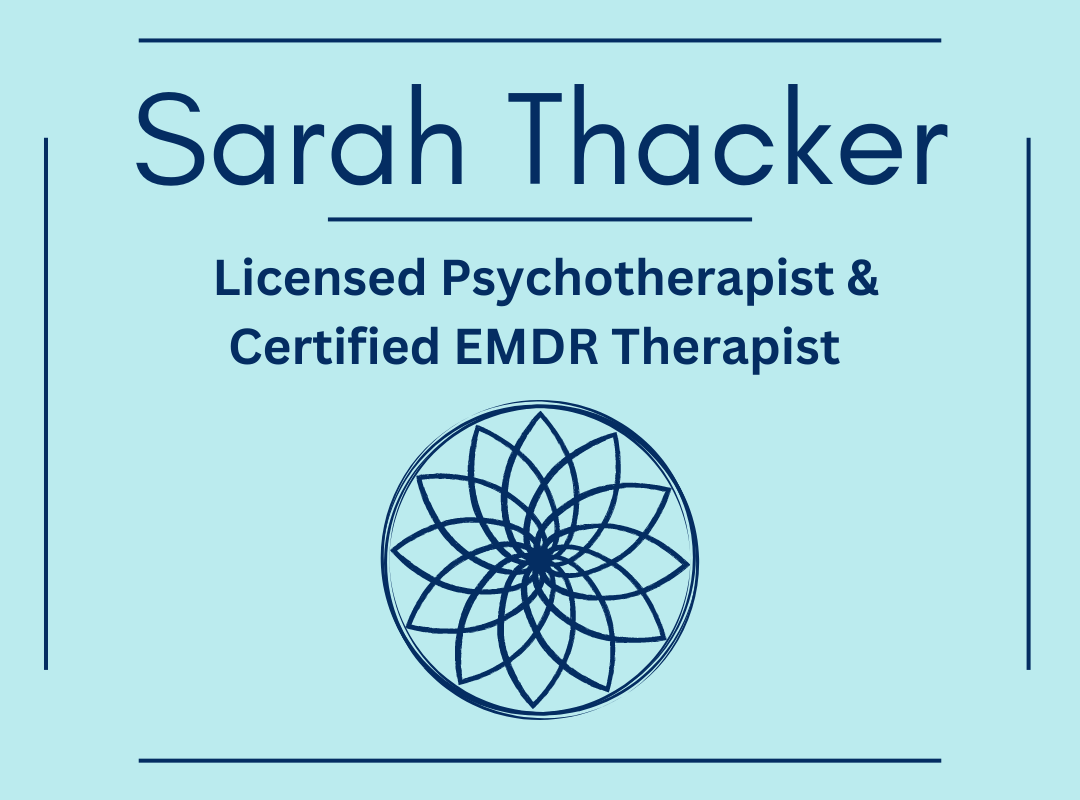EMDR is an extremely powerful and effective integrative therapy that uses a specific protocol to reduce emotional and physical distress. The distress may be related to memories, adverse life experiences or traumas that have occurred at any time throughout your life. EMDR allows the opportunity for healing at the deepest roots and helps to increase self-awareness while offering a renewed perspective on the present moment.
Since I began integrating EMDR into my clinical practice, it has transformed my work. I have been especially inspired by the power of EMDR when a person feels a deeper sense of emotional freedom and increased self-acceptance both internally and externally. This authentic self-acceptance and awareness creates a deeper connection to the core of their being as well as a sense of balance and peace within. The process allows you to not only heal, but to grow, change and feel better than imagined.
I can personally attest to the power of EMDR from both sides of the couch. After completing my first EMDR intensive training, I searched for an EMDR therapist as I was amazed by the process. Prior to EMDR therapy, I had debilitating performance anxiety. I realized through the training that I was operating out of old, stuck, negative cognitions and feedback loops in my brain that were related to my past, and were literally holding me back in my life.
I am now able to give presentations without physically shaking, a racing heart, a red face, nausea, intense fear and a near panic attack. It really has been life changing. For those I have had the privilege to support through the EMDR therapy process, I have been able to witness healing over and over again, which is truly inspiring.
EMDR stands for Eye Movement Desensitization and Reprocessing. EMDR was developed by Francine Shapiro in 1987 and is administered through an eight-phase process. Here is where it can get technical, making it a little tricky to explain, but I wanted to help to clarify some elements of EMDR therapy as so many people ask me what it’s like during certain parts of the process.
The eye movements create bilateral stimulation of the brain. You work with a specific distressing memory, body sensations and emotions that the memory brings up for you and how the memory makes you feel about yourself. These experiences from the memories may have made you feel, for example, not good enough, like you had to be perfect, or as though you are not in control. These are all examples of negative cognitions which essentially get stuck and create negative feedback loops internally, making it difficult to move forward.
The bilateral stimulation that occurs with the eye movements begins to reprocess those memories in order to desensitize to them. This essentially frees the emotional and physical distress related to the memory. After working through the distressing memories, a positive cognition is installed, creating a healthier outlook on your experience.
I will try to explain this using an example of when I reprocessed a memory related to my performance anxiety. While I was thinking of a distressing memory, I tuned into the uncomfortable emotions it brought up (embarrassed, worried, frustrated) and the uncomfortable body sensations (feeling hot, my heart racing, nausea). I simultaneously brought up how this made me feel about myself, or my negative cognition, which was: I am inadequate. The therapist asked me how distressing this felt on a 0-10 scale.
While sitting with all of that discomfort, I watched the therapist’s fingers go back and forth for about 30 seconds. She asked me to just notice whatever comes up during that time. She would stop, and I would tell her what came up. Then she instructed me to “go with that,” meaning now focus on whatever it was that came up for me. For example, I remembered my hands shaking, my mind going blank and the look on the people’s faces at the very beginning of this particular presentation. While sitting with that experience, she administered the eye movements again. This was repeated several times.
Amazingly, after about ten sets of intense discomfort, I started to feel less discomfort. I even had some positive thoughts come up and felt more at ease. When I would focus on the positive thoughts, more positive thoughts and feelings arose. While my distress did not completely go away in one experience, it did reduce enough to notice an immediate impact.
After several memories that reinforced my negative cognition were worked through, I was able to create a new template for how I view myself. This has increased my self-compassion. Now when I give a presentation, my old baggage from those memories does not show up! It really has been life changing.
This is one example of just a part of the EMDR therapy process. I wanted to offer this glimpse into the process as it can be difficult to understand, but know that there is so much more. If you would like to learn more about the technicality, the science, research and more specifically about the eight phases of EMDR, I invite you visit the website: www.EMDRIA.org.
EMDR therapy has improved the lives of so many who have struggled with memories and experiences far more intense and challenging to cope with than my example. For those who have PTSD, panic attacks, anxiety, depression, eating disorders or anyone who feels as though they are operating out of old, stuck negative beliefs about themselves, EMDR may be a useful and valuable therapeutic technique.
If you are considering EMDR therapy and have any further questions at all, or if you are in the New York City area and would like to schedule a session, feel free to contact me today.



